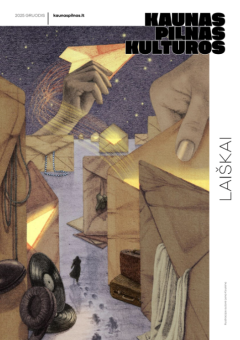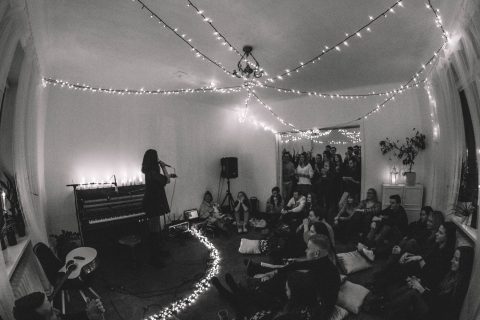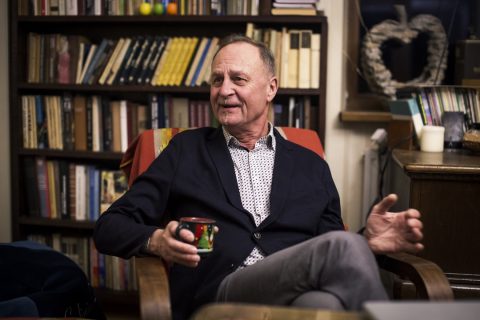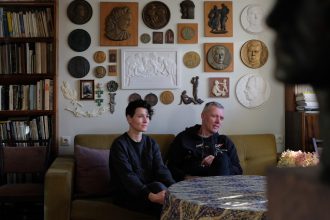I have been frequently visiting Kaunas for the past nine years. A guest, that I might not like very much myself. She comes uninvited, forgets to leave on time, and sticks her nose where she can and where she shouldn’t. She always has a lot of questions, which are only exceeded by the constant cries, “Oh my god how beautiful!” But Kaunas is forgiving and welcoming to this kind of guest, that is me. It opens its courtyards and gates and unlocks its staircases and apartment doors. It arranges incredible coincidences that lead to interesting conversations with strangers. It even pours a drop of honey liquor into an Art Deco-style glass and smiles, “So you’ll be returning again soon?” And so, I do.
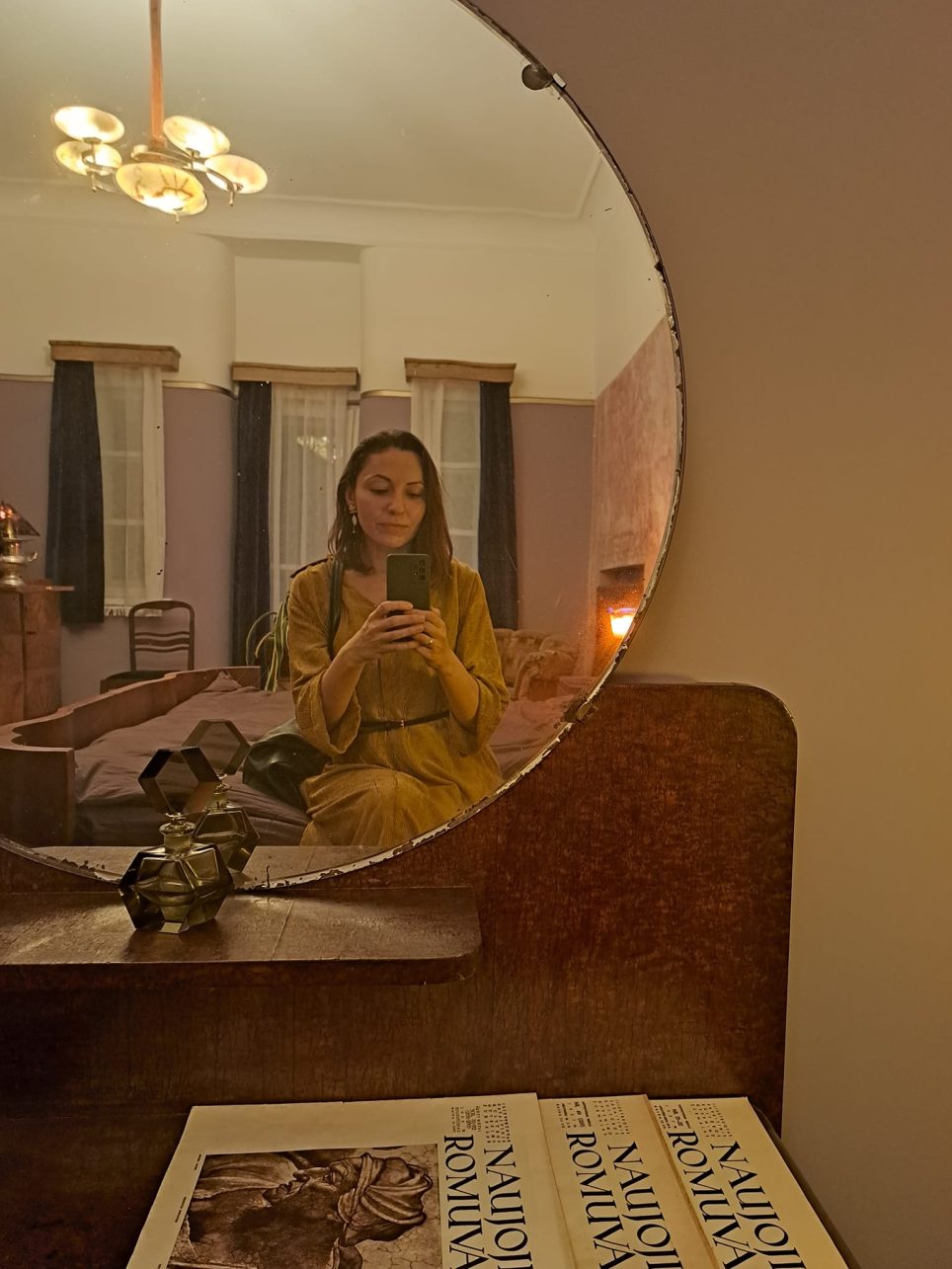
2016–2019
Kaunas enters my routine like a celebration – vividly and unexpectedly. Taking advantage of remote work opportunities, I leave Vilnius and move back to my native Suvalkija. This change brings not only a calmer daily rhythm but also more free time, which I happily spend in Kaunas.
My first solo walks were long but quiet, not yet peppered with local acquaintances, but full of beautiful buildings. Spontaneously, I climb the steep stairs of Žaliakalnis for the first time and find myself on E. Fryko Street. From there I walk along Vaižganto Street, Perkūno Alley, and then down to Minties Rato and Gėlių Rato streets. Fascinated by them, I return again and then some more.
I tried to grasp the language of interwar-period architecture, but at first, I only understood that it was something truly beautiful and completely unfamiliar. A white house with a tower, a strange two-story with a round window, a villa on a hillside – that was my understanding at the time. I feel as if I am not even a guest, but a stranger. So, I dive headlong into books, archives, and academic publications. Kaunas is slowly opening up, but I want more.
House museums become the first key to hospitality. I go to see the House-Museum of L. Truikys and M. Rakauskaitė with the help of Google Maps. “You’ve reached your destination,” I hear the second I see the greenhouse in the backyard. Greeted by the museum staff in a reserved but pleasant manner, I spent an unseemly amount of time there. From there, my feet take me to Galaunė House-Museum, where I get a taste of true hospitality. It’s all the attention you get as if you are someone’s only work… for the day. A visitor? A guest? Hard to say. You feel like you’re the only one.
Much later, my friends from Vilnius visiting Galaunė House will leave with the same impression. Arriving at the museum just before closing time, they would leave over an hour later. Everything was explained and shown unhurriedly, even though the museum staff’s working hours had long since ended. A similar experience awaited me and a friend at the Vaižgantas House. The museum attendant selling tickets kindly asked, “Would you like to purchase a guided tour?” – “No, thank you.” – “Alright, then I’ll tell you everything anyway.”
For an hour and a half, he accompanied us through every room with stories, jokes, and kind wishes. I think Vaižgantas would have been pleased.
2020–2022
Just before the pandemic, I move back to Vilnius. On quarantine evenings, I look out the window at the Vilnius TV Tower and intensely read everything I can about interwar period Kaunas. Gradually, a plan starts to take shape in my mind about how to visit Kaunas more often: I need to start leading tours there!
I know right away what my first tour will be about – interwar period Žaliakalnis. I know where it will begin and where it will end. I also know what my Facebook page will be called: “One-Day Holiday” (Vienos dienos atostogos). Because that’s exactly how I feel in Kaunas – like I’m on holiday. I complete a tour guide course, loudly announce the start of my services as a guide, and then, after the quarantine is over, with legs shaking with fear, I dive headfirst into the adventure.
And it’s just starting. After a tour along the quiet streets of Žaliakalnis, I head toward the train station – it’s time to return home to Vilnius. I pause briefly to tie my shoe near the former villa of Petras Klimas, called Eglutė (now I know the name of that white house with the tower). Just then, a man steps out of the door. We look at each other, smiling silently. “It’s a very beautiful house; do you live here?” I break the silence with a silly question. It turns out he’s been living in the house for over 50 years. We start talking. I don’t know who he is, and he doesn’t know who I am. But the conversation is so engaging that I silently curse the train that’s forcing me to cut it short.
But I later meet that gentleman again. And again. I am allowed to see the impressive staircase of the villa with its soaring ceilings and preserved original steps. Eventually, this same gentleman and his wife invite me – a complete stranger – over to their home. I want to pinch myself: I am in Petras Klimas’ villa, in the rooms designed for his family, where Vaižgantas once lived and passed away. We drink coffee and talk about the villa’s first owner, who never actually lived there.
If, at this point, you’re thinking, “Too good to be true,” just listen further. Once, during European Heritage Days, I was leading a tour for library visitors. Normally, my tour groups are small, but this time, several dozen participants showed up. And we – a massive group of strangers – also visited that same gentleman’s apartment in Petras Klimas’ villa. Without any prior requests or registrations, we were simply invited in as guests.
The same year, 2022
Another villa – another adventure. After waiting for some time, I finally book a weekend stay in an apartment located in the former villa of architect Stasys Kudokas. The apartment is stunning, furnished with interwar-period furniture. Everything – from the plates to the light fixtures and artwork – exudes Art Deco charm. Even the large plant in the room is no ordinary one; it’s a monstera, as was fashionable during the interwar period.
The apartment is magnificent, but my mood is dreadful. It so happens that the weekend of my stay is the first weekend after the Russian invasion of Ukraine. As I take in the fantastic spaces, I can’t help but think about how much that same aggressor has taken from us. And what would await this lovingly restored home if history were to repeat itself? What would happen to us?
A few days later, a message from the property owner slightly lifts my spirits. I gain permission to show my tour participants the exclusive staircase of this villa (thank you again to the owner). And once again, an adventure unfolds. One day, while exploring the staircase with my group, the doors to that same Art Deco apartment suddenly open. It turns out that a family had rented it for the weekend. And that family invites us in to take a look around. Not just to look around – they are celebrating a birthday with a small gathering. So, our small group ends up enjoying some šakotis and a sip of honey liquor. Maybe this is the birthplace not only of Lithuanian modernism but also of hospitality.
2023–2024
I still live in Vilnius; I still go to Kaunas on weekends to lead excursions. My hospitality adventures – thank God – are continuing. On one rainy weekend, when it seemed like the whole city was deserted, I was giving a tour near the J. Lapėnas’ house. Just as we were about to leave, the doors of this “millionaire’s skyscraper” opened, and a man who works in the building came out. To my own surprise, I blurted out that I’d love to take my group inside. To see the stunning staircase, the preserved original elevator shaft, and the display of old photographs. Of course, he let us in. Of course, we got to see it.
Some interwar period spaces – or rather, their owners – are not keen to let you in immediately. The evolution of relationships is an important thing.
Once, I wandered into the courtyard of an interwar period house that now operates as an educational institution. The guard scolded me without holding back. That could have been the end of it. But it turned out differently: after some time, my relationship with the institution warmed to the point where I now take groups not only into the courtyard but also inside the villa itself. In another institution, I was allowed to explore the interior without any arguments when I mentioned that I was very interested in the work of the building’s architect, Feliksas Vizbaras. The concierge just shyly inquired, “And where exactly is that Vizbaras here?”
Of course, there are houses (courtyards, streets, balconies) whose inhabitants don’t show hospitality. Once, on my way to the L. Truikys and M. Rakauskaitė apartment, I was given a rather unique lesson by a lady living in the same building. According to her, I stroll around the street whenever I want, but I never help weed the garden… (To be fair, during her little lecture, she wasn’t weeding the garden either.) But such minor incidents are just a light sprinkle of pepper, meant to balance the flavors.
2025
As I write this, I can only hope and anticipate what 2025 will bring. I hope that Kaunas will remain a part of my life and that I will continue inviting myself to visit. I hope the city will remain just as welcoming. I see signs that it will.
The other day, while in Kaunas, I decided to visit a complex of interwar period townhouses –the very one where the writer and exile Dalia Grinkevičiūtė once lived. So, there I was, standing and looking at the commemorative plaque, taking a few photos. As I turned to leave, I heard a car pulling into the street and stopping next to me. In my mind, I quickly thought, “Either I’m about to be scolded, or something very interesting will happen.”
The driver rolls down the car window and asks, “Is there something you’re interested in?” I reply that I am. We start talking. He turns off the car engine, steps out, and starts sharing a story about a close relative of his – someone who also made significant contributions to interwar period Lithuania. We chat while standing on the street until I have to rush off to catch my train. Before I leave, I manage to jot down his phone number. Stories like the one he told me must be written down, read, and shared. I haven’t called yet. But I will. And I’ll go visiting again – to Kaunas.
